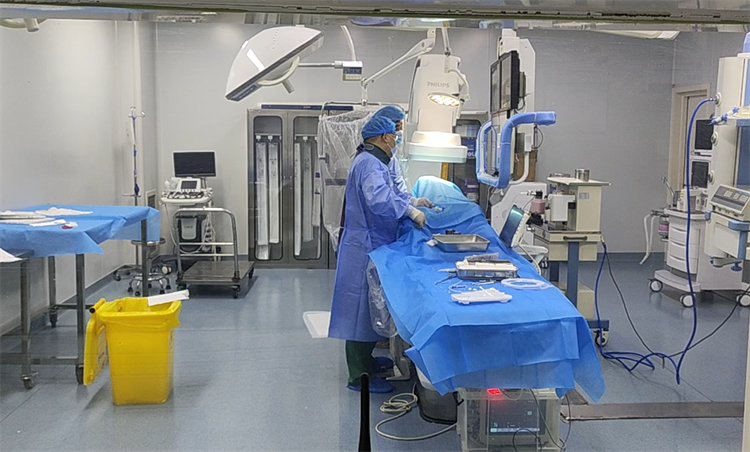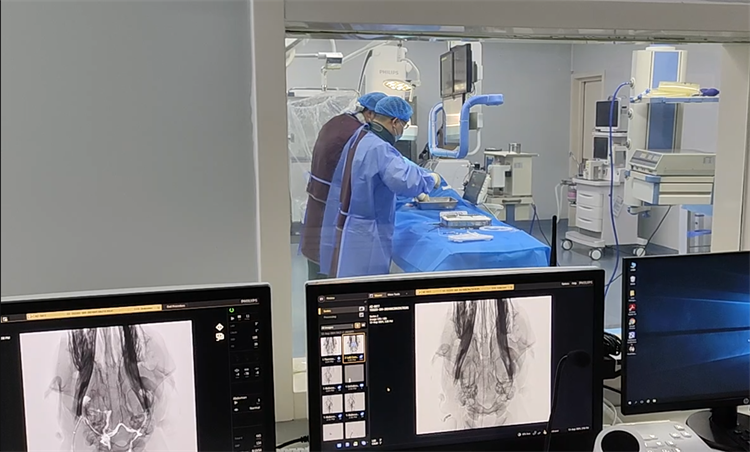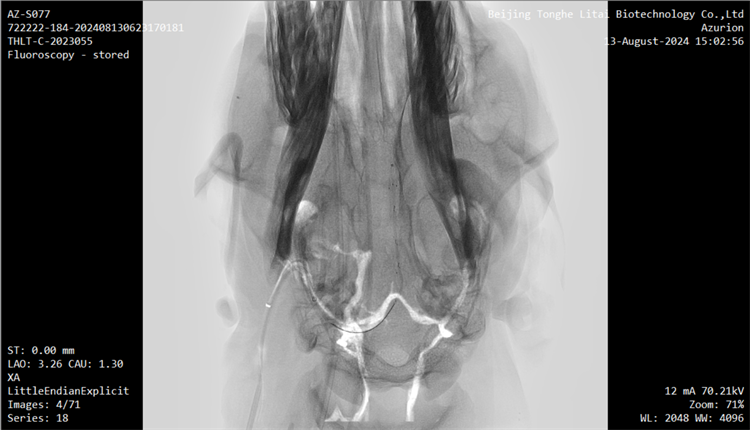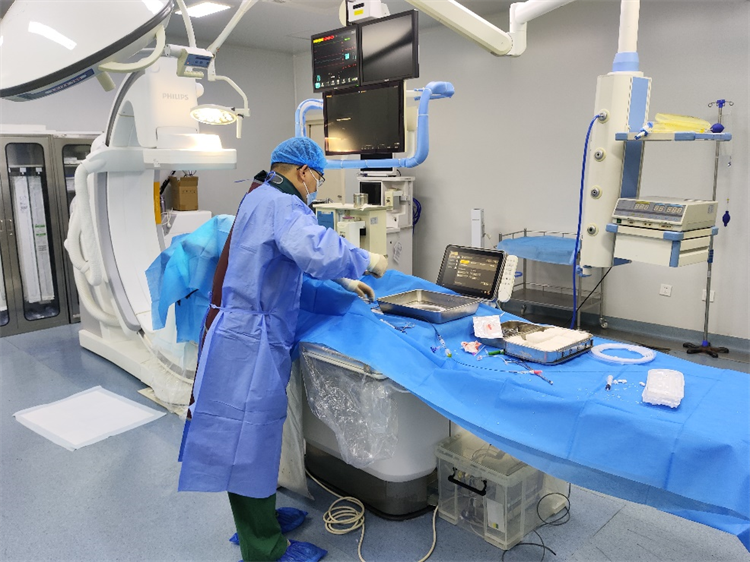NKU Achieves New Breakthrough in Interventional Brain-Computer Interfaces (BCI) Technology
Successful completion of the global first trial of endovascular removal of an interventional BCI sensor


Duan Feng’s team is conducting endovascular removal of an interventional BCI sensor
Recently, Beijing has witnessed the successful endovascular removal of the global first interventional brain-computer interface (BCI) sensor. This groundbreaking procedure was led by Professor Duan Feng’s team from Nankai University’s School of Medicine and College of Artificial Intelligence. For the first time, the team safely removed both the interventional BCI sensor and its wireless transmission module, marking a significant milestone in enhancing the safety of interventional BCI technology and laying a strong foundation for its clinical applications.
In recent years, Professor Duan Feng’s team has made significant strides in the field of interventional BCI research.
On June 25, 2022, the team conducted China’s first interventional BCI animal trial with sheep, achieving significant breakthroughs in core technologies such as interventional electroencephalography (EEG) electrodes and endovascular EEG signal collection. The team also developed neurointerventional devices such as stents and catheters, addressing the drawback of irreversible damage to brain regions caused by traditional interventional BCI.
On May 4, 2023, the team completed the global first interventional BCI trial with non-human primates, achieving a major technological leap from passive collection to active control of interventional EEG signals. This breakthrough included advancements in endovascular EEG signal collection and interventional EEG signal recognition.

Photograph of the wireless transmission device and its placement subcutaneously in the sheep

Imaging of the interventional EEG sensor removal process
This trial represents a further achievement built on the foundation of two earlier experiments. It involves implanting a wireless transmission device subcutaneously in the test animal and successfully transmitting the collected interventional EEG signals wirelessly, achieving stable and efficient signal transmission. Additionally, the interventional BCI sensor, previously implanted in the intracranial vascular wall of the sheep, was safely removed through an interventional procedure. The entire process was guided by DSA (Digital Subtraction Angiography) to ensure the safety of the operation.
During the trial, the test animal exhibited no signs of rejection and remained healthy even after the interventional BCI sensor was removed. The success of this trial not only verified the safety and biocompatibility of the wireless transmission device and the interventional BCI system but also demonstrated that the interventional BCI sensor could be safely removed without damaging brain tissue or blood vessels. This lays a solid foundation for the future clinical application of interventional BCI technology.

Professor Duan Feng highlighted that this trial marks a significant advancement in BCI technology research and showcases the enormous potential of interventional BCI in terms of safety and application. The application of wireless transmission technology will make interventional BCI systems more portable and easy to use. By recognizing motor cortex EEG signals to control rehabilitation and assistive robots, this technology offers new hope for patients with motor function disorders, such as stroke, brain injury, and paralysis, significantly improving their quality of life.
“Going forward, with the combination of medicine and engineering, this technology will play a significant role in establishing a national brand of high-end medical devices and bring extensive market prospects and profound social benefits to the field of neurological rehabilitation,” said Professor Duan.
(Edited and translated by Nankai News Team.)









